-
Are you in Other? If not, please update your location below.
-
Other
- Services
- Class Actions
- No Win No Fee
- Our Firm
- Resources
- Contact Us
In healthcare, time is often a critical factor in patient outcomes. When medical professionals fail to provide timely diagnosis and treatment, the consequences can be severe, life-altering, or even fatal.
In this blog we explore the complex issue of delayed diagnosis in medical negligence cases, looking at causes, impacts, and legal implications.
Quick Links
A delay in treatment occurs when a patient doesn’t receive the necessary care to recover or improve their condition in a timely manner. While minor delays might not always have significant impacts, in many cases, the timing of medical intervention can dramatically affect the course of an illness or injury.
According to the Joint Commission, a global patient safety organisation, some common relays for treatment delays include:
A report by the Joint Commission evaluating the first six months of 2023 revealed that 5% of sentinel events were caused by delays in treatment. A sentinel event is defined as a patient safety incident that leads to death, permanent harm, or severe temporary harm. These events are profoundly impactful, causing significant distress for both patients and healthcare providers involved.
While not every delay in treatment amounts to medical negligence, a considerable number do. The critical factor in determining medical negligence is whether the delay resulted from a breach of the standard of care expected from medical professionals.
Medical professionals—including general practitioners, paramedics, nurses, orthopaedists, neurologists, gynaecologists, surgeons, physiotherapists, and chiropractors—are bound by a duty of care to their patients. This duty requires them to provide care that meets the accepted standards of their profession.
In legal terms, medical negligence occurs when a healthcare provider fails to exercise the level of care that another competent professional in the same position would have provided.
For a delay in treatment to be considered negligence, it must meet several criteria:
It’s important to note that not all negative outcomes in medical care are the result of negligence. Sometimes, despite the best efforts of medical professionals, treatments may not work as expected or conditions may worsen due to factors beyond anyone’s control.
Proving that a delay in treatment was the result of medical negligence can be challenging.
The primary hurdles include:
To overcome these challenges, it’s often necessary to rely on expert testimony from other medical professionals. These experts can provide insights into the standard of care, how it was breached, and how the delay impacted the patient’s outcome.
Delayed diagnosis can occur in various medical contexts. Here are some common scenarios that may constitute medical negligence.
Delayed diagnosis scenario | Example |
Misreading or ignoring test results | A radiologist misses clear signs of a tumour on an X-ray, leading to a delay in cancer diagnosis and treatment. |
Failure to order appropriate tests | A patient presents with symptoms of heart disease, but the doctor fails to order necessary cardiac tests, resulting in a delayed diagnosis of a serious heart condition. |
Dismissing patient complaints | A patient repeatedly reports severe headaches, but the doctor dismisses these as stress-related without proper investigation, missing an early diagnosis of a brain aneurysm. |
Misdiagnosis leading to delay | A patient’s symptoms are mistakenly attributed to a minor condition, when in fact they indicate a more serious illness, delaying proper treatment. |
Communication failures | A specialist identifies a potential issue but fails to communicate this to the patient’s primary care physician, resulting in delayed follow-up and diagnosis. |
Laboratory errors | A lab mix-up leads to incorrect test results, causing a delay in identifying a treatable condition. |
Failure to recognise urgency | Emergency room staff underestimate the severity of a patient’s symptoms, leading to a delayed diagnosis of a time-sensitive condition like stroke or appendicitis. |
Incomplete patient history | A doctor fails to take a comprehensive patient history, missing crucial information that would have led to an earlier diagnosis of a genetic condition. |
Inadaquete follow-up | A doctor notices a suspicious mole but fails to schedule or emphasise the importance of a follow-up appointment, leading to a delayed diagnosis of melanoma. |
If you believe you or a loved one has been a victim of a delayed diagnosis due to medical negligence, it’s important to take prompt and careful actions.
GMP Law offers free initial consultations to help individuals determine if they have a viable case. Our experienced lawyers can guide you through the complex process of evaluating your situation.
To better demonstrate how delayed diagnosis medical negligence claims work in practice, we’ll explore two recent cases handled by the medical negligence team at GMP Law.
In July 2019, a patient was rushed to an emergency department in NSW, presenting with hypotension following vomiting and diarrhoea. Despite initial impressions of an upper gastrointestinal bleed resulting in hemorrhagic shock, there was a significant delay in addressing the patient’s unstable blood pressure and bleeding ulcer.
As a result of this delay the patient suffered a stroke, leading to:
This patient now requires constant care and it is no longer capable of living independently. The impact extended beyond the patient, with her husband and daughter experiencing ongoing psychological difficulties due to the stress and dramatic changes in their lives.
After extensive negotiations, a settlement was reached:
A patient sustained a severe shoulder injury in a skateboarding accident, including an anterior dislocation of the right shoulder joint and tendon tears. Despite visiting a public hospital, he was initially referred only to physiotherapy and wasn’t assessed by the orthopaedic team for months.
By the time he was seen by orthopaedics, his shoulder was no longer suitable for arthroscopic cuff repair surgery due to the severity of the injury. Despite this, surgery was performed, which not only failed to improve his condition but also resulted in an injury to the lower cord brachial plexus, causing a permanent neurological deficit in the arm.
The case was complicated by a dispute over whether the nerve injury was caused during the surgery or during the initial accident. Through careful review of clinical records and expert testimony from an independent orthopaedic surgeon, a case of negligence was established.
The claim was settled for $300,000 at mediation.
These case studies highlight a few important points about medical negligence claims:
In both cases, initial delays in proper assessment and treatment led to significantly worse outcomes for the patients.
Medical negligence doesn’t just affect the patient; it can have profound effects on their families as well.
Both cases required extensive review of medical records and expert testimony to establish negligence.
In both instances, having skilled legal representation was crucial in achieving substantial settlements for the affected parties.
If you or a loved one has experienced a delay in diagnosis or treatment that you believe may constitute medical negligence, GMP Law is here to help. Our team of experienced medical negligence solicitors understand the complexities of these cases and the profound impact they can have on individuals and families.
We offer:
Don’t bear the burden of medical negligence alone. We are here to help you explore your options for seeking justice and compensation.
A delayed diagnosis occurs when a healthcare provider fails to recognise and diagnose a condition within a reasonable timeframe, given the symptoms and available information.
The delay can result in the progression of the condition, potentially leading to more severe health outcomes or reduced treatment efficacy.
The determination of a reasonable timeframe depends on a few factors:
Expert medical testimony is often crucial in establishing what constitutes a reasonable timeframe in each specific case.
In most Australian states and territories, the standard limitation period for medical negligence claims is three years from the date you discover the negligence or twelve years from the date of the negligent act or omission, whichever is earlier.
However, this can vary:
For minors, the time limit does not start until they turn 18
In cases of cognitive impairment, the time limit may be extended.
Learn more: How long after the fact can I make a medical negligence claim?
Compensation in delayed diagnosis cases can cover a range of damages:
The specific compensation amount will depend on how the delay impacted your health outcomes and quality of life. For example, if a delayed cancer diagnosis led to more aggressive treatment or reduced survival chances, this would be factored into the compensation calculation.
Proving causation in delayed diagnosis cases often requires:
This often involves complex medical and legal arguments, which is why having experienced legal representation is important.

Julie Baqleh is a skilled personal injury lawyer with 22+ years' experience. She's a problem solver who gets results for clients facing complex legal challenges. She specialises in Medical Negligence and Institutional Abuse law.
In the spirit of reconciliation GMP Law acknowledges the Traditional Custodians of country throughout Australia and their connections to land, sea, and community. We pay our respects to their Elders past, present, and emerging, and extend that respect to all Aboriginal and Torres Strait Islander peoples today.

Your location is currently:
Please wait while you are redirected to the right page...